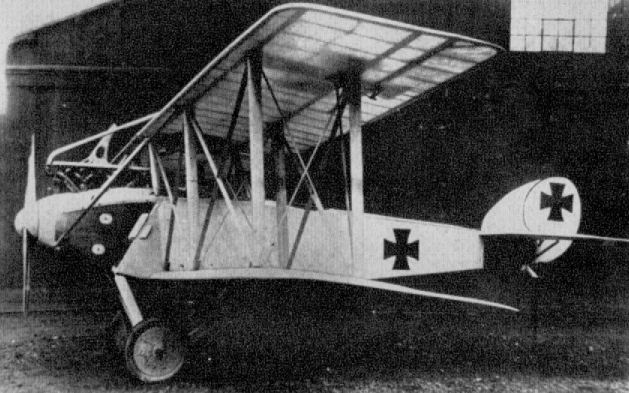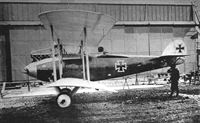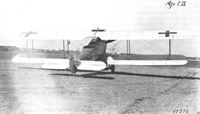
Описание
Страна: Германия
Год: 1916
O.Thetford, P.Gray German Aircraft of the First World War (Putnam)
Ago C VII
Prototype only constructed. Engine 220 h.p. Benz Bz IV. No data available. The machine appears to utilise standard C IV fuselage and tail, with steel strip bracing in place of the usual cables.
Ago C VIII
This aircraft was virtually a re-engined C VII with a 260 h.p. Mercedes D IVa; there was also some revision of the tail surfaces. No other data available.
Описание:
- O.Thetford, P.Gray German Aircraft of the First World War (Putnam)
- J.Herris Otto, AGO and BFW Aircraft of WWI (A Centennial Perspective on Great War Airplanes 37)
Фотографии
-
J.Herris - Otto, AGO and BFW Aircraft of WWI /Centennial Perspective/ (37)
Ago C.IV with conventional 2-bay bracing in postwar Estonian service
-
O.Thetford, P.Gray - German Aircraft of the First World War /Putnam/
The Ago C.VII in its initial configuration was built in 1916. (Peter M. Grosz Collection/STDB)
-
J.Herris - Otto, AGO and BFW Aircraft of WWI /Centennial Perspective/ (37)
The Ago C.VII with revised fin and rudder in Estonia with postwar Estonian markings.
-
J.Herris - Otto, AGO and BFW Aircraft of WWI /Centennial Perspective/ (37)
Ago C.IV 1521/17 was tested at Adlershof in the mid-1917 with standard two-bay wing bracing although the tapered wing planform remained the same. A leading edge radiator has replaced the standard airfoil radiator. The postwar Estonian C.VII on the previous page is in that configuration.
-
J.Herris - Otto, AGO and BFW Aircraft of WWI /Centennial Perspective/ (37)
The Ago C.VIII prototype was a conventional two-bay two-seater built in 1917.
-
J.Herris - Otto, AGO and BFW Aircraft of WWI /Centennial Perspective/ (37)
A later prototype of the Ago C.VIII with refined fuselage and exhaust..
-
J.Herris - Otto, AGO and BFW Aircraft of WWI /Centennial Perspective/ (37)
The later Ago C.VIII prototype had an airfoil radiator mounted in the center section. Ailerons were mounted on all four wings and the wings had rectangular planform. This aircraft was the Ago C.VIII/1 or CL.8/1 C.1114/18. (Peter M. Grosz Collection/STDB)
-
J.Herris - Otto, AGO and BFW Aircraft of WWI /Centennial Perspective/ (37)
Modified Ago C.VIII prototype in front of the Ago factory at Johannisthal. The wood wheels reflected the rubber shortage. The wing cellule has been dramatically redesigned with three bays of slanted struts. (Peter M. Grosz Collection/STDB)
-
J.Herris - Otto, AGO and BFW Aircraft of WWI /Centennial Perspective/ (37)
The Ago C.IX prototype was a conventional two-bay two-seater. It looked like the Ago C.VIII with airfoil radiator replaced by a leading edge radiator.
-
J.Herris - Otto, AGO and BFW Aircraft of WWI /Centennial Perspective/ (37)
The Ago C.IX prototype was a conventional two-bay two-seater.












